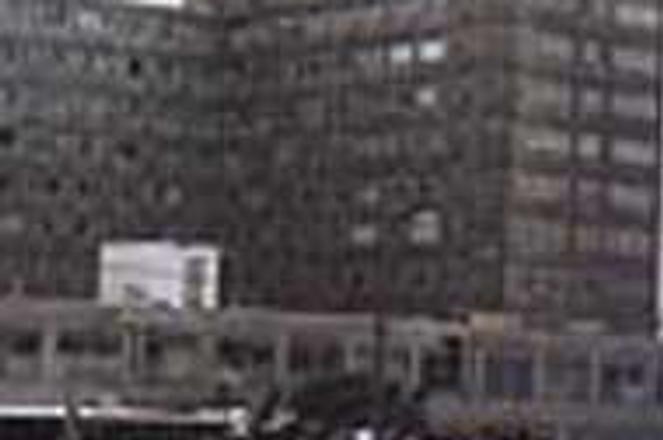Slovak hospitals, like this one in the Kramáre district of Bratislava, have been granted emergency funds to tide them over until the 1999 budget is approved. Health care should receive more money than last year.photo: Ján Svrček
Disagreements over a proposed tax hike and the reinstatement of an import surcharge stalled the passage of the 1999 state budget from the government to parliament on February 17. The cabinet deadlock leaves state-funded agencies to continue struggling with an inadequate provisional budget and wondering how their agencies will be cut in the coming months.
Finance Minister Brigita Schmögnerová, speaking at a press conference following the cabinet meeting, said some details remained to be ironed out, but declined to specify which ones. She said that approval of the budget would now not come until February 24 at the earliest.
In the days leading up to the cabinet sitting, however, disagreement had emerged among high-level ministers over basic economic policy. On February 15, Deputy Prime Minister for Economy Ivan Mikloš had mooted the raising of Slovakia's value added tax (VAT) from 6 to 12%, an idea that was promptly slapped down by Schmögnerová (see story this page).
On February 16, Social Affairs Minister Peter Magvaši suggested that the government might re-introduce an import surcharge to boost state income, a measure discussed by Schmögnerová herself last November. But Mikloš immediately ruled out such a move, saying it had earlier been discussed and rejected by cabinet.
What the budget contains
The 1999 state budget law plans a fiscal deficit of 15 billion Sk ($395 million), projecting revenues of 180 billion Sk ($4.7 billion) and expenditures of 195 billion Sk ($5.1 billion). The budget proposal expects GDP growth to fall from 5.8% to 3%, and plans to keep the inflation rate below 10% and the unemployment rate under 15%.
Mikloš said at a February 15 press conference that the cabinet's primary intent was to cut the state fiscal deficit to one third of its 1998 level, or from 6% to 2% of the GDP.
The budget counts on collecting 155.7 billion Sk in tax revenues and 24.3 billion Sk in non-tax revenues, a category that includes payments from profitable state-owned firms, such as Slovak Telecom, which is obliged by law to pay 500 million Sk to the 1999 budget, or the Slovak Gas Industry (SPP) and the National Bank of Slovakia (NBS), which must deliver 3 billion Sk each.
While the details have not yet been made public, the proposed austerity budget will generally cut spending in almost every state sector, slashing the state administration budget through pay cuts and layoffs. It will also drastically cut state investments into highway, waterworks and power plant construction, and will reduce funds for scientific research.
According to SITA, the Agriculture sector will lose 1.3 billion Sk from its 1998 budget, a reduction the Agriculture Ministry predicts may cause strikes among farmers and other agriculture workers.
The only sector to receive more money than last year will be the troubled Health Care Ministry, which will get an added $500 million Sk to reach 11 billion Sk.
Rose-coloured glasses
Although details of the budget are scarce, domestic and international analysts are not convinced the government can meet its targets.
In its late January visit, representatives of the International Monetary Fund predicted that the fiscal deficit could hit 20 billion Sk in 1999, arguing that the government has not taken adequate steps to ensure the revenue it is counting on.
Martin Barto, general director of the strategy division at state-run SLSP bank, agreed that the budget draft's tax and non-tax revenue expectations were too optimistic. "The government has set itself too high a target. In tax revenues they would have to make strong efforts to improve the system of tax collection first," Barto said.
Even Schmögnerová admitted that some of the non-tax revenue targets would not likely be met. At the February 15 press conference, Schmögnerová said that the Slovak Telecom duty would perhaps not be paid due to the firm's shortage of capital for investments in new technologies and know-how.
Another soft target, Barto said, was the cabinet's goal of keeping unemployment under 15%. Preliminary February statistics, he said, showed that the unemployment rate was currently around 16.5% and expected to rise on the shoulders of crises in the metallurgy and heavy manufacturing sectors. "If unemployment jumps to 20% as some predictions have it, it will put heavy pressure on expenditures which could extend the deficit," Barto said.


